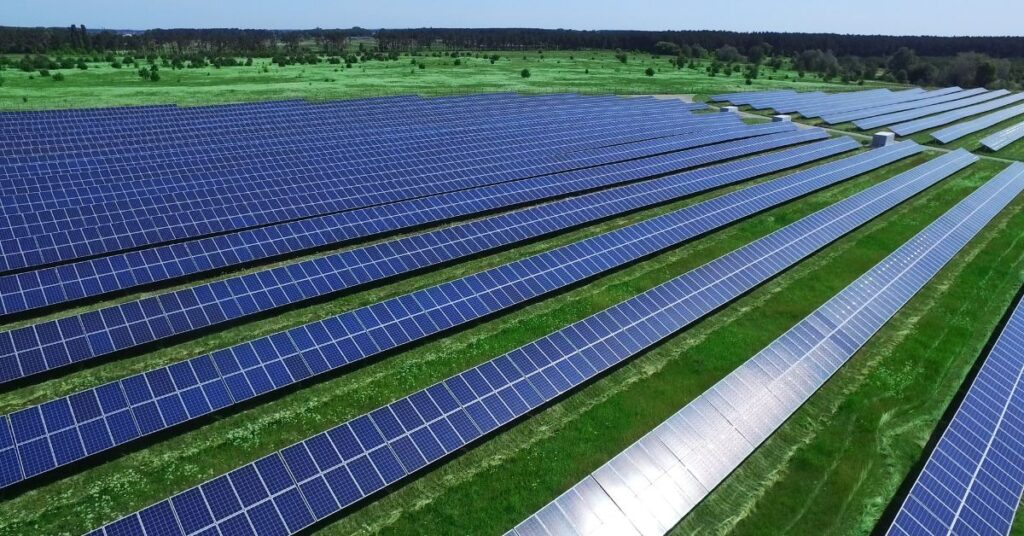Linking the Dots Between Multiple Advantages of Solar Energy
Explore the diverse benefits of solar energy at Linking the Dots Between Multiple Advantages of Solar Energy. Our site delves into the environmental, economic, and health benefits of harnessing solar power, from reducing carbon footprints to lowering energy bills and supporting sustainable living.
Discover in-depth guides, the latest innovations, and insights into how solar energy contributes to a cleaner, greener planet. Whether you’re a homeowner, business owner, or simply curious about renewable energy, we provide all the information you need to make informed decisions and embrace solar solutions for a brighter future.
Table of Contents
Linking the Dots Between Multiple Advantages of Solar Energy
Solar energy has emerged as one of the most viable solutions to the pressing challenges of climate change, resource depletion, and energy accessibility. As we shift towards a more sustainable future, the advantages of solar energy are becoming increasingly apparent. From environmental benefits to economic opportunities, solar power offers a wide range of advantages that make it a leading contender in the renewable energy sector. In this blog post, we’ll connect the dots between the various benefits of solar energy to understand how they collectively support a greener, healthier, and more resilient world.
1. Environmental Benefits of Solar Energy

- Reduction in Greenhouse Gas Emissions: Solar energy generates electricity without producing greenhouse gases, which are the primary drivers of climate change. By replacing fossil fuel-based energy sources with solar power, we can significantly reduce carbon dioxide and other emissions.
- Decrease in Air and Water Pollution: Solar panels produce no air pollutants or toxic chemicals during their operation. Unlike coal or natural gas plants, they do not contaminate local air or water resources, making solar power an essential tool in reducing respiratory and waterborne diseases.
- Conservation of Water Resources: Traditional power plants, especially nuclear and coal plants, require massive amounts of water for cooling and processing. Solar power, in contrast, requires minimal water, making it an ideal solution for regions facing water scarcity.
- Reduced Reliance on Fossil Fuels: By adopting solar energy, countries and regions can reduce their dependence on finite fossil fuels, which are not only polluting but also prone to price volatility. As a renewable resource, solar energy provides a more stable and secure alternative.
2. Economic Advantages
- Cost Savings on Energy Bills: Solar panels can drastically reduce or even eliminate electricity bills for households and businesses. As the cost of solar technology continues to decrease, the financial incentives for solar adoption become even more appealing.
- Energy Independence: Solar energy provides individuals and communities with the ability to produce their electricity. This independence can protect against fluctuations in energy prices and reduce reliance on grid power, especially in remote areas.
- Creation of Jobs and Economic Growth: The solar energy sector has become one of the fastest-growing job markets. Installation, maintenance, manufacturing, and distribution of solar products create diverse employment opportunities and contribute to local economic development.
- Increase in Property Value: Homes and commercial buildings with solar installations often have higher market values than those without. Solar energy is viewed as an asset, attracting eco-conscious buyers and reducing the long-term costs of ownership.
3. Technological Advancements and Innovation

- Enhanced Efficiency and Performance of Solar Panels: Innovations in photovoltaic (PV) cell technology have led to higher efficiency and better performance, even in low-light conditions. This progress allows solar panels to generate more energy from the same amount of sunlight, making them a viable option in a wider range of locations.
- Energy Storage Systems: With advancements in battery technology, solar energy systems can now store excess power for use during nighttime or cloudy days. This capability enhances the reliability and flexibility of solar energy, making it more competitive with traditional energy sources.
- Integration with Smart Grids: Solar energy can be seamlessly integrated into smart grids, enabling better management of electricity demand and supply. This integration helps stabilize energy costs and ensure a consistent energy supply.
- Emergence of Solar-Powered Products: Solar technology has expanded beyond just power generation. Innovations like solar-powered cars, streetlights, and even wearable devices illustrate the versatility of solar energy and open new possibilities for sustainable, energy-efficient products.
4. Social and Health Impacts
- Reduction in Health Risks: Fossil fuel combustion contributes to air pollution, which is linked to respiratory and cardiovascular diseases. Solar energy is a clean alternative, reducing exposure to harmful pollutants and improving public health outcomes.
- Increased Access to Energy: In remote or underdeveloped areas where traditional grid infrastructure is impractical, solar power can provide affordable and accessible energy. Solar-powered microgrids or off-grid systems can bring electricity to communities, improving their quality of life and economic opportunities.
- Empowerment of Communities and Individuals: Solar energy allows communities to take control of their power generation and consumption. Local solar projects foster collaboration, increase awareness about energy use, and empower people to become part of the sustainability movement.
- Promotion of Sustainable Development: Solar energy aligns with sustainable development goals (SDGs) by providing clean energy, improving economic opportunities, and reducing environmental impacts. Solar adoption can be a powerful catalyst for broader societal change.
5. Flexibility and Scalability
- Adaptable to Various Settings: Solar power systems can be installed in residential, commercial, industrial, and even rural settings, making it one of the most versatile energy sources. Solar panels can be placed on rooftops, integrated into building facades, or deployed in large-scale solar farms.
- Scalable Solutions for Any Need: Solar technology is highly scalable, meaning it can meet the needs of small homes or large industries. From single solar panels for individual households to expansive solar farms supplying entire cities, solar power is flexible and adaptable to different scales and requirements.
- Modularity of Solar Installations: Solar installations are modular, allowing for incremental expansion. Users can start with a small setup and gradually add more panels as their energy needs or budgets increase. This flexibility makes solar energy an attractive option for individuals and businesses alike.
- Off-Grid and Hybrid System Capabilities: Solar energy can be harnessed both on and off the grid. Off-grid systems are ideal for remote locations, while hybrid systems that combine solar with other energy sources can ensure a reliable power supply even when sunlight is limited.
6. Financial Incentives and Support from Governments

- Tax Incentives and Rebates: Many governments offer tax credits, rebates, and subsidies to encourage the adoption of solar energy. These incentives make solar installations more affordable and accessible, driving up adoption rates and supporting a growing solar industry.
- Renewable Portfolio Standards (RPS): RPS programs require utilities to source a certain percentage of their energy from renewable sources. By encouraging utilities to adopt solar power, RPS policies create a larger market for solar energy and increase its competitiveness.
- Feed-in Tariffs and Net Metering: These policies enable solar energy producers, even small-scale residential users, to sell excess electricity back to the grid. Net metering and feed-in tariffs can make solar power systems even more economically viable by generating an additional income stream.
- Government Research and Development Funding: Funding for solar energy research helps advance the technology, improve efficiency, and reduce costs. By investing in solar innovation, governments can accelerate the adoption of clean energy and support a sustainable future.
7. Challenges of Solar Energy and Solutions
While solar energy has numerous advantages, it’s essential to address some of its challenges:
- Intermittency of Solar Power: Solar energy production depends on sunlight, which can be inconsistent. Energy storage solutions like batteries, as well as hybrid systems, can mitigate this issue by storing excess energy generated on sunny days for later use.
- High Initial Costs: Although solar costs have decreased significantly, the initial installation cost can still be a barrier. Financing options like solar leases, power purchase agreements (PPAs), and government incentives can make solar more affordable for households and businesses.
- Space Requirements for Large-Scale Installations: Solar farms require a considerable amount of space, which may not always be available in densely populated areas. Rooftop solar systems and the integration of solar technology into urban infrastructure can optimize space and make solar energy feasible in cities.
- Environmental Impact of Manufacturing and Disposal: The production and disposal of solar panels have environmental implications. However, advances in panel recycling and the development of less toxic materials are making solar technology more sustainable.
FAQs About Linking the Dots Between Multiple Advantages of Solar Energy
Conclusion
Linking the dots between the multiple advantages of solar energy reveals a holistic picture of its potential. Solar energy not only addresses environmental concerns but also provides economic, social, and health benefits. Its versatility, adaptability, and the ongoing advancements in technology make it one of the most promising solutions to the world’s energy challenges. With strong support from governments, communities, and individuals, solar power can play a transformative role in building a cleaner, greener, and more resilient world.
Solar energy is more than just a source of electricity—it is a pathway to a sustainable future. By continuing to harness and innovate within this field, we are investing not only in renewable energy but also in the long-term well-being of our planet and future generations.
Click here to learn more about Linking the Dots Between Multiple Advantages of Solar Energy
Click here to learn more about Solar Panels: The Sustainable Solution to Protect Your Roof

